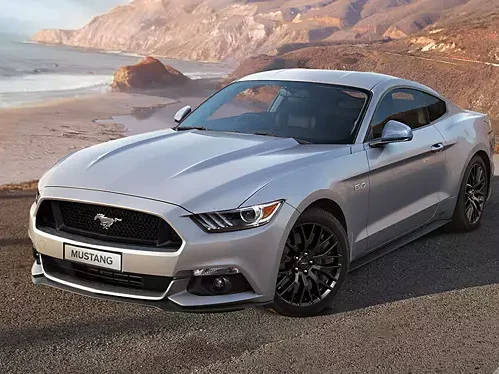Introduction:
Since its inception in 1964, the Ford Mustang has been an iconic symbol of American muscle cars, setting the standard for performance, style, and affordability. However, amidst its illustrious history, there are a few models that have tarnished the legacy of this beloved pony car. Despite their contributions to automotive history, these three old Ford Mustang models stand out for all the wrong reasons, leaving a mark that diminishes the overall reputation of the Mustang brand.

The Mustang II (1974-1978):
The 1970s marked a challenging era for the automotive industry, particularly with the oil crisis and increasing regulations on emissions and safety. In an attempt to adapt to these changing times, Ford introduced the Mustang II in 1974. However, it was a departure from the classic Mustang formula that enthusiasts had come to love.
The Mustang II was smaller, lighter, and lacked the raw power of its predecessors. Its design was criticized for being uninspired and lacking the aggressive stance that defined earlier Mustangs. Additionally, the use of underpowered engines further dampened the driving experience, failing to capture the essence of what made the Mustang a legend on the road.
Furthermore, the Mustang II was plagued by quality control issues, including rust problems and subpar build quality, further eroding consumer confidence in the brand. While it may have been a product of its time, the Mustang II remains a black mark on the Mustang’s heritage, representing a low point in its evolution.
The Mustang SVO (1984-1986):
In the 1980s, fuel efficiency and turbocharged engines were all the rage, leading Ford to introduce the Mustang SVO in 1984. While it was marketed as a high-performance variant, aimed at competing with European sports cars, the SVO failed to resonate with Mustang enthusiasts.
One of the main criticisms of the Mustang SVO was its departure from the traditional V8 engine, opting instead for a turbocharged inline-four. While this decision was made in the interest of fuel economy and emissions compliance, it alienated many Mustang purists who valued the distinctive rumble of a V8 engine.
Additionally, despite its impressive handling and advanced technology for its time, the Mustang SVO struggled to find its place in the market, with sales figures falling short of expectations. Ultimately, it was discontinued after just three model years, leaving behind a legacy of unfulfilled potential and missed opportunities for the Mustang brand.
The Mustang II (1994-2004):
The late 1990s and early 2000s saw a resurgence of interest in American muscle cars, thanks in part to the success of retro-inspired designs like the Chevrolet Camaro and Dodge Challenger. In response, Ford attempted to capitalize on this trend by reintroducing the Mustang II for the 1994 model year.
While the retro styling of the Mustang II initially generated excitement among fans, it was ultimately let down by its underwhelming performance and lackluster build quality. Despite numerous updates and revisions over its ten-year production run, the Mustang II failed to recapture the magic of the original pony car era.
Conclusion:
While the Ford Mustang has undoubtedly left an indelible mark on automotive history, there are certain models that have tarnished its legacy. From the uninspired design of the Mustang II to the failed experiment of the Mustang SVO and the disappointing revival of the Mustang II in the 1990s, these models have contributed to a perception of inconsistency and missed opportunities within the Mustang brand. Moving forward, it is essential for Ford to learn from these missteps and reaffirm the Mustang’s position as a symbol of American performance and innovation.
